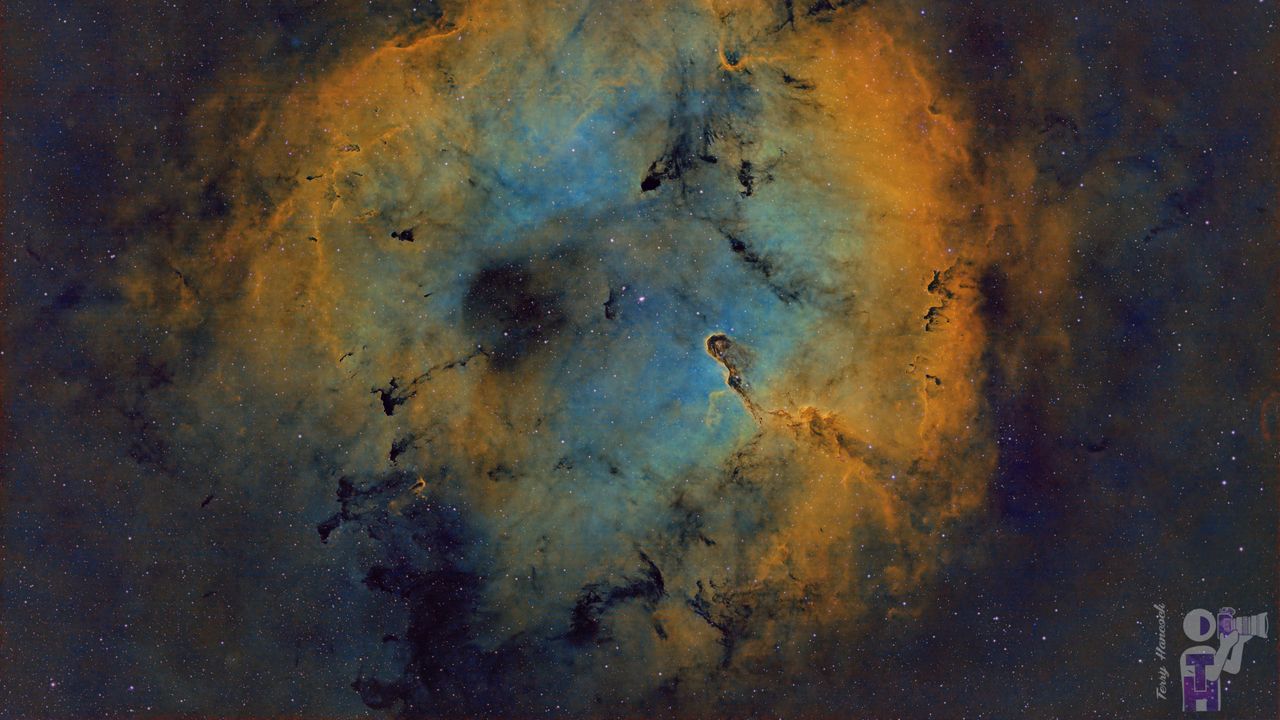Astrophotographer Terry Hancock has unveiled a breathtaking image of the Elephant’s Trunk Nebula, also known as IC 1396, located approximately 2,400 light-years from Earth in the constellation Cepheus. This remarkable capture showcases a star-forming region teeming with vibrant gas and dust, dramatically illuminated by young stars embedded within the nebula.
IC 1396 is classified as an emission nebula, a vast cloud of material that glows due to ionization from ultraviolet radiation produced by the stars. The dark filaments visible throughout the image represent dense areas rich in gas and dust, which will eventually give rise to new stars. The nebula earned its name from a prominent column of twisting interstellar dust and gas, resembling an elephant’s trunk, stretching over 20 light-years.
Hancock shared insights about his work, stating, “The image highlights various celestial elements, including a notable emission nebula, by contrast against the bluish cavity that fills the center of IC 1396,” in correspondence with Space.com. The entire nebula complex spans just over 5° of the sky, roughly equivalent to the width of ten full moons lined up side by side. To the naked eye, this celestial wonder would only appear as a faint glow under optimal dark sky conditions.
Technique and Equipment Used for the Capture
Hancock dedicated nearly 114 hours to capturing the light from this ancient nebula. He utilized a 180 mm Newtonian reflector, equipped with a custom astronomy camera from Whitewater, Colorado, on September 22, 2021. By employing specialized astronomy filters to isolate specific wavelengths of light, Hancock was able to compile and edit his images using advanced astrophotography software, Pixinsight and Adobe Photoshop. This meticulous process revealed an extraordinary level of detail and color in the nebula.
For aspiring astrophotographers interested in capturing their own stunning images of the night sky, Hancock’s work serves as inspiration. Various cameras and lenses are available that cater to different levels of expertise, with recommendations available in guides that highlight the best equipment for beginners.
The Elephant Trunk Nebula in Context
The Elephant’s Trunk Nebula is not just a visual spectacle; it plays a crucial role in understanding stellar formation. Emission nebulae like IC 1396 are essential for astronomers studying how stars develop and evolve over time. The materials present in these regions are fundamental to the creation of new stars, providing insight into the lifecycle of stellar systems.
For those eager to expand their knowledge of the cosmos, resources are available that outline significant celestial events and provide guidance for stargazing. These include nightly sky guides and blogs detailing major astronomical occurrences, making it easier for enthusiasts to explore the wonders above.
As the field of astrophotography continues to grow, Hancock’s stunning image of the Elephant Trunk Nebula stands as a testament to the beauty of the universe and the potential for discovery. Anyone wishing to share their own deep-space astrophotography is encouraged to submit their work to Space.com for a chance to connect with a wider audience.





































































